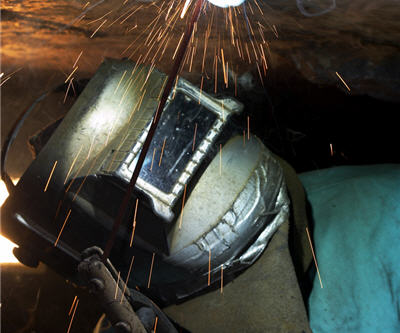
The massive developments in mining and oil and gas in Canada have also pulled along a thriving manufacturing sector, according to a study by Conference Board of Canada and the Business Development Bank of Canada.
The report, which was released on Monday and will bolster the Western Premiers who are pushing back against NDP leader Thomas Mulcair’s Dutch disease criticisms, found that support activities for the resource sector have nearly quadrupled between 2009 and 2011 and are forecast to double again in 2012 to $310 million.
Mulcair has said that the booming resource sector has come at a price for other parts of Canada, that is a higher Canadian dollar that makes the resource sector uncompetitive and also crowds out investment.
The Conference Board of Canada, however, sees gains in a wide range of industries, such as machinery manufacturing, fabricated metal products and professional services.
“Machinery manufacturing is seeing growth in exports to the United States and a significant increase in demand for agriculture, construction and mining machinery equipment. Despite limited price growth, profits are forecast to exceed $1.9 billion this year, which would bring the industry’s bottom line back above its pre-recession level,” writes the report authors.
Dutch disease was coined by The Economist in 1977 to describe how the Netherland’s manufacturing sector withered after a large natural gas field was discovered by the country in 1959.
“We’ve hollowed out the manufacturing sector,” said Mulcair on CBC.
“At the present time, the way we are developing and exploiting the oil sands sector is causing an imbalance in our economy. That’s demonstrable.”
The report’s author, however, see benefits that are widely shared.
“It is interesting to note that the economic boom linked to oil and gas and mining activities is benefiting many industries – not only in Western Canada, but throughout the country,” said Pierre Cléroux, Vice President, Economic Analysis, at BDC.
“In addition to the positive impacts related to the dynamism of the oil and gas and mining sectors, businesses in many manufacturing sectors are performing well thanks to the growth in exports to the U.S. – a first since the end of the recession. Despite the strong dollar, which is an ongoing challenge to the competitiveness of businesses, and the uncertainty created by the eurozone debt crisis, the outlook is positive for many Canadian entrepreneurs.”
“Driven by high commodity prices, investment in the Canadian mining industry continues to grow at a robust pace. In addition to boosting the support activities for oil and gas industry, this investment boom will stimulate demand for machinery, fabricated metals and architecture and engineering services,” said Michael Burt, the Conference Board’s Director, Industrial Economic Trends.
Comments
econguy
You missed the point Michael, as did the conference board of Canada. Of course domestic (i.e. non-tradable or not for export) manufactured goods will be stimulated by the resource boom, it’s the non-boom “tradables”, (i.e. manufactured goods for export that get hurt.)
If the theory holds one can also assume once the “boom” ends, that non-tradable manufactured goods will go back to pre-boom levels but that the tradables (manufactured goods for export) sector will not recover since it will have left the country by that time,.
That’s the point of Dutch Disease. Read the following seminal article on Dutch Disease which spells it all out….
http://irserver.ucd.ie/dspace/bitstream/10197/1423/1/wp85_36.pdf